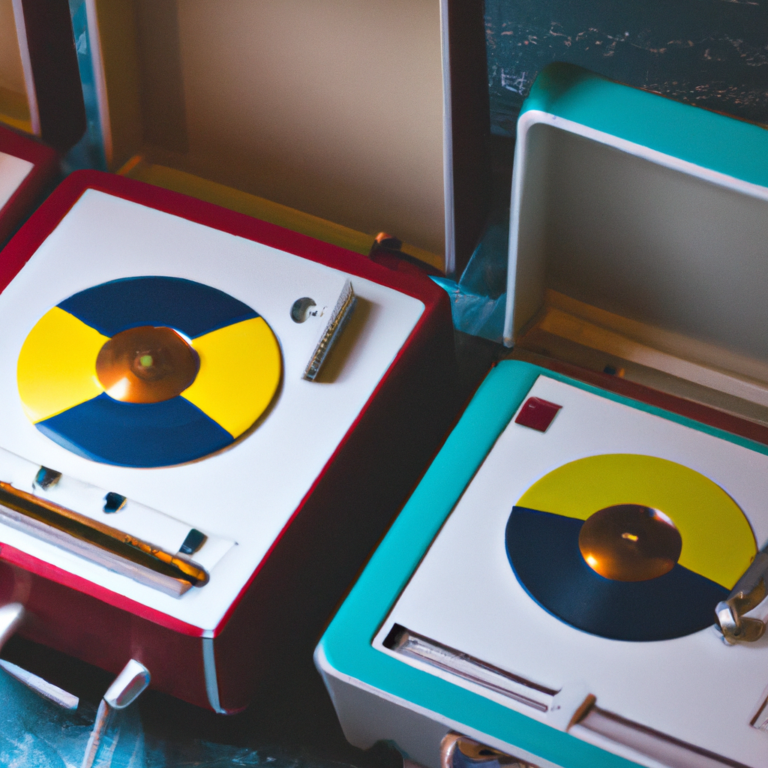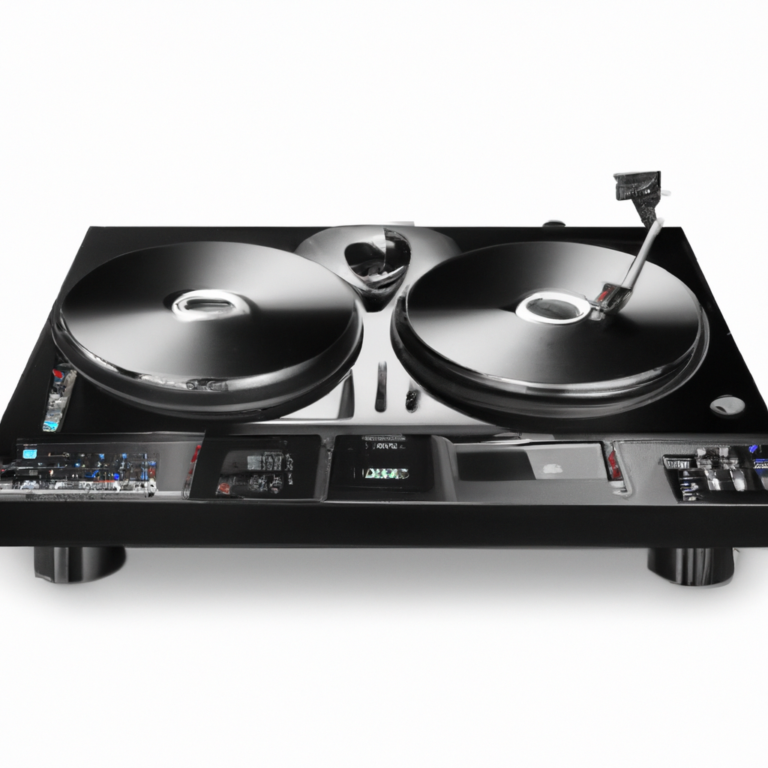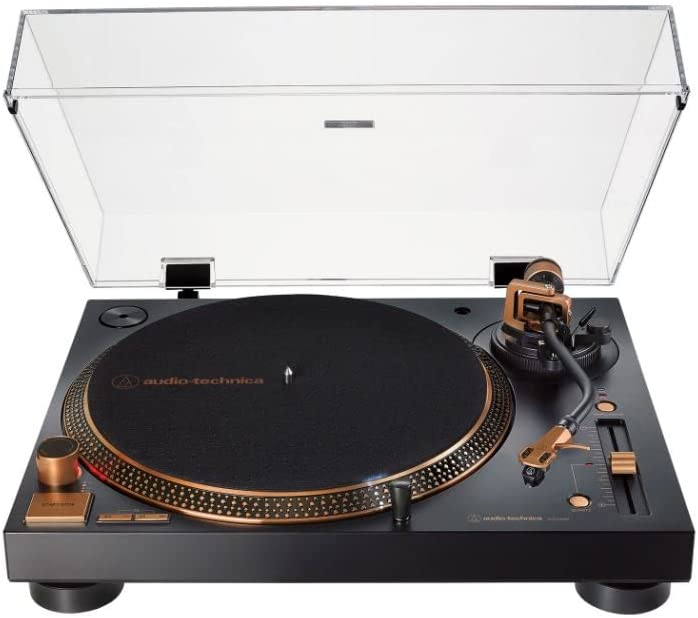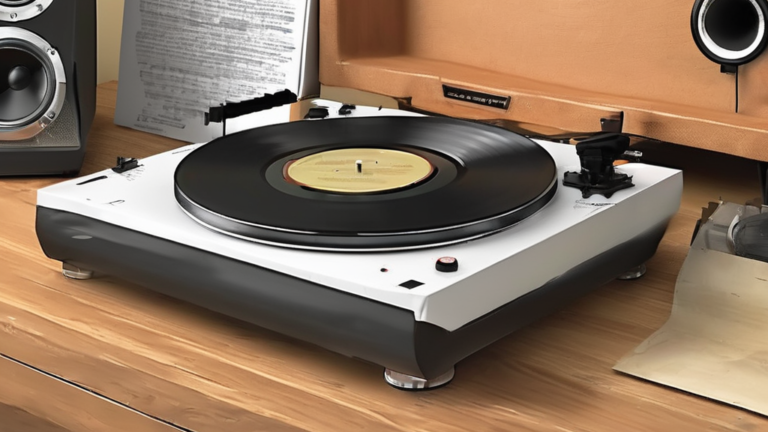What Is A Turntable?
A turntable is a device used for playing vinyl records. It rotates the record at a constant speed while a stylus or needle is placed on the surface of the record to read the grooves and produce sound.
If you’ve ever wondered about the fascinating world of vinyl records and how they produce such incredible sound, then you’re in the right place. In this article, we’ll dive into the realm of turntables and uncover the magic behind these iconic music players.
Get ready to be transported to a world where the warm crackle of a needle hitting the groove is pure music to your ears. Let’s explore what makes a turntable tick!
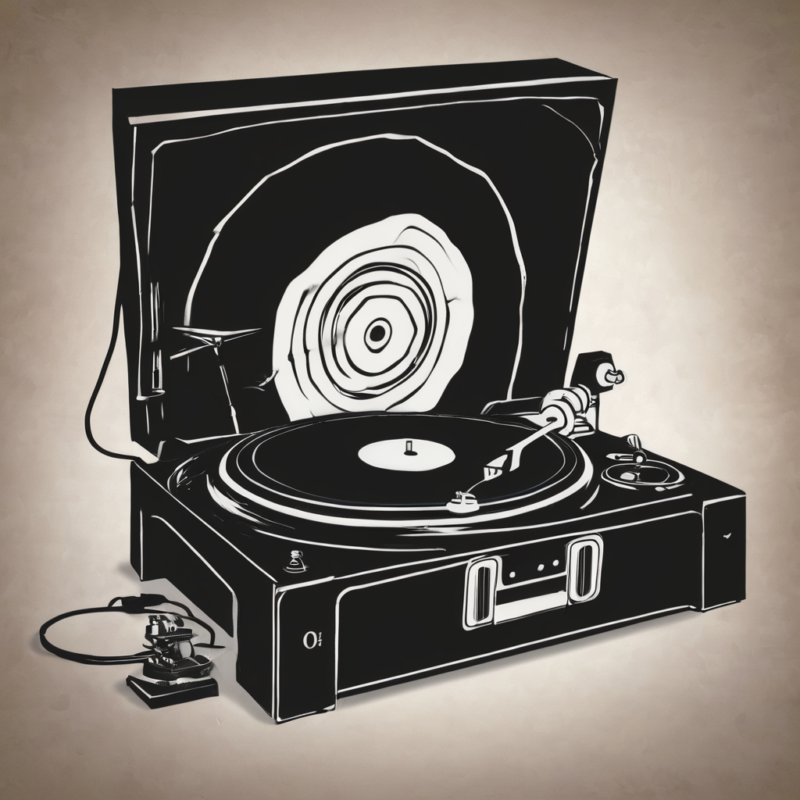
What is a Turntable?
A turntable is a device used for playing vinyl records. It rotates the record at a constant speed while a stylus or needle is placed on the surface of the record to read the grooves and produce sound.
The stylus, typically made of a diamond or other hard material, follows the grooves on the record and converts the physical movements into electrical signals. These electrical signals are then amplified and sent to speakers or headphones, allowing us to hear the music in all its analog glory.
One of the key components of a turntable is the platter, which is the part that holds the record and rotates it. The platter is usually made of materials like aluminum, acrylic, or glass, chosen for their stability and resonance characteristics.
Another important element is the tonearm, which holds the stylus and allows it to track the grooves accurately. The tonearm must be carefully balanced and calibrated to maintain proper tracking force and anti-skate, ensuring optimal sound reproduction.
Additionally, turntables often incorporate features like adjustable pitch control for fine-tuning the playback speed, as well as a cueing mechanism that allows for precise placement of the stylus at the beginning of a track.
Overall, turntables are not just devices for playing music, but gateways to an immersive and nostalgic audio experience that captivates music enthusiasts across generations.
The Physical Experience of Vinyl
The record player, a cornerstone of any high-quality audio system, is fascinating. Whether it’s a belt drive or a direct drive, the experience is uniquely analog.
There’s something special about placing the stylus, an integral part of the cartridge – be it a magnetic or ceramic cartridge – on the groove of the LP or 45s.
It’s a calibration process, adjusting the tonearm and ensuring the platter spins at the correct RPM. The preamp and phono stage come into play, enhancing the resonance and turning subtle vibrations into audible sound.
We can’t forget the romance of an album cover. More than just a decorative piece, it’s a glimpse into the world of music. The liner notes offer an intimate connection with the artist, a peek into their thoughts and inspirations.
Starting with Turntables
Let’s shift our attention from the tactile, physical connection to the music, and delve into the wondrous world of setting up your audio rig. Now, don’t be daunted. The challenge and thrill of creating your setup is a rewarding journey.
You’ll need a turntable, speakers, and a stereo amplifier or receiver. Remember, you’re not just assembling a piece of machinery, but crafting a personal, musical sanctuary.
Picking out a turntable isn’t as simple as you’d think. It’s not just about the look or price. You’ll want to consider the type of magnetic cartridge it uses, as this can greatly impact the reproduction of sound.
Don’t let the technical jargon scare you away. You’re learning a new language, and it’s okay to be a beginner. It’s all part of the journey. Embrace the learning curve, and remember, each piece of equipment you choose is a step closer to your perfect sound.
Types of Turntables
Firstly, we’ll delve into utilitarian, budget-friendly classics that offer a balance between cost and performance for music enthusiasts. Next, we’ll explore luxe options for sound connoisseurs – high-end units that prioritize superior auditory experiences over price points.
Finally, we’ll discuss how to integrate turntables into pre-existing sound setups, ensuring you can enjoy your favorite tracks without needing to overhaul your current setup.
Utilitarian, Budget-Friendly Classics
First, let’s discuss what I like to call utilitarian, budget-friendly classics. These are great entry points for those new to the world of turntable enjoyment. They’re typically easy to use, without compromising too much on the audio experience.
They may not offer the most robust features, but they’re ideal for those keen on exploring this hobby without breaking the bank. Models like the Audio-Technica AT-LP60 or Sony PS-LX310BT fall into this category.
These turntables offer a no-frills approach to enjoying your music collection, without the need for any advanced setup or technical know-how.
Luxe Options for Audiophiles
Now that we’ve laid the groundwork, let’s step into the world of luxury turntablism. High-end options for music connoisseurs aren’t just about music playback but are a testament to precision engineering, design aesthetics, and unparalleled fidelity. These pricier pieces are built with top-notch components, often handcrafted.
You’ll find that they offer advanced features like adjustable counterweight, damping control, and ultra-precise speed control for the most immersive, detailed listening experience possible. They’re often beautifully designed too, making a statement in any room.
If you’re serious about your music, investing in a high-end turntable can enhance your listening experience in ways you might not have thought possible. This is truly music appreciation at its finest.
Connecting Turntables to Existing Audio Systems
Feeling the thrill of unboxing your new turntable is an unparalleled experience. But, let’s not forget the next crucial step: integrating it with your existing equipment. It’s a tad bit technical, but don’t worry, you’ve got this.
To begin with, ensure your turntable is compatible with your existing setup. If your device has a built-in amplifier, it’s a breeze; simply connect it to your speakers. On the other hand, if it doesn’t, you’ll need an external amplifier to make the connection.
Also, keep in mind the type of connectors used. Most turntables use RCA cables, but some may require different types.
Popular Turntable Brands and Models
Let’s delve into some popular brands and models that are cherished by music enthusiasts worldwide. The Audio-Technica AT-LP5X offers a modern aesthetic, while the Elipson Chroma Carbon Riaa BT comes with wireless capabilities.
The Pro-Ject Primary E and Essential III are known for their minimalist design, and the Technics SL-1200GR is a classic that’s loved by professionals. Finally, the Rega Planar 1 and Planar 8 are considered gems due to their impressive performance.
Audio-Technica At-LP5X
First in line is the Audio-Technica AT-LP5X. Known for its sleek design and excellent performance, this model doesn’t just look the part but plays it too. You’ll find it a delight to explore your favorite tunes with this machine.
With a modern electronic speed control, it smoothly switches between 33⅓, 45, and 78 RPM speeds, ensuring your music is always on point. Its strong, low-vibration, high-torque motor provides stable rotation while reducing unwanted noise. It’s certainly a model redefining how we listen to music.
Elipson Chroma Carbon Riaa BT
The Elipson Chroma Carbon Riaa BT is a notable mention, known for its chic design and advanced technology. It’s a treat for the eyes and ears, effortlessly blending functionality and aesthetics. It offers a built-in Bluetooth connection, enabling you to wirelessly stream your favorite tunes.
The Chroma Carbon Riaa BT is not just about good looks but also about delivering a music experience that’s as smooth as silk. It’s a great choice if you’re after a blend of style and performance. Next up, we’ll discuss the Pro-Ject Primary E and Essential III.
Pro-Ject Primary E and Essential III
One that you might find particularly interesting is the Pro-Ject Primary E and Essential III. Pro-Ject, a revered brand in the world of music reproduction, has outdone itself with these two models. The Primary E model is affordable and high-performing, offering a great starting point for anyone new to turntables.
On the other hand, the Essential III is a bit more advanced, perfect for those who already have some experience and are looking to upgrade. Both models are known for their excellent performance and timeless design, making them a great addition to any music lover’s collection.
Technics SL-1200GR
This model is a shining example of Technics’ craftsmanship and relentless pursuit of perfection. The SL-1200GR’s coreless motor eliminates cogging, ensuring smooth rotation, while its high-precision rotary positioning sensors deliver unparalleled accuracy.
Its heavyweight-class brass-and-aluminum die-cast construction ensures excellent vibration damping. Meanwhile, its high-rigidity body and two-layer structure plinth improve the clarity of the sound coming out of your collection of 33s and 78s.
Rega Planar 1 and Planar 8
These models have garnered significant attention within the disc-spinning community. The Planar 1 offers an easy setup, making it a fantastic choice for beginners. On the other hand, the Planar 8 is a step up, luring in more seasoned enthusiasts with its advanced features and precision.
Both models are great options for investing in a high-performing turntable. These models beautifully demonstrate that Rega continues to maintain a strong reputation in the turntable industry, consistently delivering top-notch models that meet a range of needs and preferences.
Turntable Features to Consider
Taking a closer look at the features of your music machine, you’d want to consider the built-in audio stage. This impacts how your device processes sound. Your preference for manual or automatic operation will also play a part. Let’s also delve into the drive type.
Would you go for a friction-based system or a direct motor system? Lastly, the quality of your sound output device and needle is crucial. High-quality ones can significantly enhance your listening experience. Each of these factors can shape your musical journey, making it something truly worth cherishing.
Built-in Phono Stage
A built-in phono stage, also known as a phono preamp, amplifies the music signal coming from your deck before it reaches your speakers. Without it, the audio output would be weak and barely audible. Some models come with this feature built-in, offering a more straightforward setup and saving you the cost of purchasing an external one.
However, if you’re after the ultimate listening experience, you might prefer the flexibility and superior performance an external phono stage can provide. It’s a matter of balancing convenience against sonic performance.
Manual vs. Automatic Operation
In a manual turntable, you’ll need to lift the arm and place it on the disc yourself, a delicate process that could potentially damage the disc if not done carefully. On the other hand, an automatic turntable does this job for you, dropping the arm onto the disc at the press of a button.
While automatic operation provides convenience, manual operation allows for a more intimate interaction with your music gear. The choice between the two depends largely on your personal preference and level of comfort with handling discs.
Drive Type: Belt-Drive vs. Direct-Drive
There are two main types to consider: belt-drive and direct-drive. A belt-drive turntable employs an elastic belt to spin the platter. This type is prized for its ability to reduce motor noise and vibration, leading to a purer, more precise sound.
On the other hand, a direct-drive turntable uses a motor directly beneath the platter to spin it. These models are loved for their stable speed and stronger torque.
Cartridge and Stylus Quality
An often overlooked aspect, the needle, and cartridge can significantly influence the audio reproduction of your turntable. The needle traces the grooves in your records, while the pickup converts this mechanical energy into an electrical signal. A high-quality needle and pickup can ensure a full, balanced sound, free from distortion.
Remember, these components may wear out over time, so it’s essential to check their condition regularly. If you’re serious about your music, don’t skimp on these vital parts of your turntable.
Maintaining Your Turntable
Having explored the features to consider when acquiring your turntable, let’s now shift our focus to the essential element of maintaining this magnificent device. After all, you want to ensure your music gear stays in prime condition for years of listening pleasure.
To keep your records in pristine condition, you need to make sure they’re clean and stored correctly. One tip is to gently clean your records with a record cleaning solution and soft cloth before and after each play. Also, always store your records upright in a cool, dry place to prevent warping.
Next, your turntable’s needle and holder need attention too. Replacing these vital parts regularly will not only keep your music sounding great but also prolong the life of your records.
Finally, setting your turntable just right for optimal playback is crucial. This process, which we’ll refer to as ‘tuning up’, involves adjusting the weight and anti-skate settings. Though it may sound complex, don’t worry, I’ll guide you through it. So let’s dive in and keep your turntable spinning smoothly.
FAQs
Why Are Turntables Popular Again?
The charm of turntables lies in the tangible, immersive experience they offer. We live in an era where we’re overwhelmed with digital content. Turntables provide a refreshing break from this overload, allowing us to connect with music in a more meaningful way. When you drop the needle, there’s a sense of anticipation that’s missing in digital formats. It’s this unique tactile and auditory experience that’s sparking renewed interest in turntables.
How Do Turntables Differ From Modern Music Players?
The principle distinction lies in the user experience. Turntables are a tactile, interactive music-listening experience. You’re responsible for manually placing the needle, unlike digital music players that offer a ‘press and play’ convenience.
Additionally, turntables offer a distinct, warm sound known as the ‘Turntable Sound’, which many music lovers find appealing. This is in contrast to the crisp, clear sounds produced by modern music players.
Finally, turntables are considered a piece of art, a vintage charm that adds to your home decor. Modern music players, while sleek and compact, don’t necessarily offer the same aesthetic appeal.
What Is the Difference Between a Turntable and a Record Player?
A turntable and a record player are often used interchangeably, but there is a slight difference between the two:
– A turntable is the component of a record player that holds and spins the vinyl record.
– A record player, on the other hand, includes the turntable along with additional components such as a built-in amplifier, speakers, and a needle or cartridge for playing the record.
In summary, a turntable is just a part of a record player, while a record player is a complete system for playing vinyl records.
Conclusion
In conclusion, becoming familiar with turntable technology offers a unique journey into the world of music. You’ll discover a new appreciation for the artistry and craftsmanship that goes into producing those beloved melodies. The next step in your journey could be to learn how to use turntables.
When making your selection, keep in mind the different designs, brands, features, and the need for maintenance. Remember, the goal is to immerse yourself in the musical experience, so make sure you choose a turntable that resonates with you. Happy spinning!
Our Mission: At AudioInspects, we are dedicated to providing the most comprehensive and authentic reviews of audio equipment on the market. We conduct independent testing and research of products, so you can make an informed decision before making a purchase. Our mission is to help you find the best audio equipment to improve your listening experience. So trust us to deliver the most reliable recommendations and advice.
Disclosure: When you do decide to make a purchase through our links, please note that we may earn a commission, but this does not affect the honesty of our reviews. You can read our affiliate disclosure in our Disclosure.


